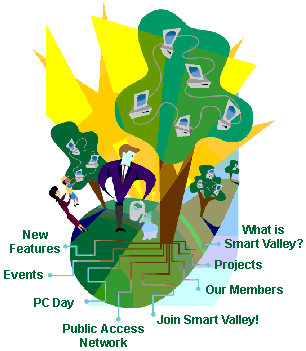In the 1990s, when I began promoting virtual volunteering – people engaging in volunteer roles and tasks via their computer from home, work, or wherever else they might be – many corporations balked at the idea of allowing employees to from their desktops. The reason given was usually that it would take away from employee’s productivity and profitability on behalf the company. The Disney Corporation happily put an item in their employee newsletter about virtual volunteering back in the late 1990s, but talked about it being a great thing employees could do from home, after work.
Now, almost 30 years later, I’m seeing a new trend: people promoting virtual volunteering as a great way for corporate employees to engage in philanthropy – in this case, the giving of their time and expertise – from their workspace, whether that workspace is at home or onsite at the company, but claiming that one of the benefits is that it is “time agnostic”, as one company put it: you do it when you have some extra time between work responsibilities, and it doesn’t come with all the challenges of traditional volunteering, like taking up SO much time.
I’ve seen this kind of thinking from the corporate world about all volunteering, not just virtual volunteering, and the results are poor, even disastrous, for the nonprofit, charity, school, NGO or community group trying to engage that employee as a volunteer:
- The employee never does find that “extra” time in the work day, or after the work day, to complete the assignment. This is because, for volunteering to happen, you have to make the time for it – even if that time is at 8 p.m. in the evening, for an hour, that time has to be reserved and honored.
- The employer is thrilled to celebrate that employees are undertaking virtual volunteering, but balk at the idea of the employee setting aside time during the work day to do it. Mentoring that young person or designing that brochure suddenly is not something the employer wants employees focused on – there is WORK to be done!
- Both the employer and the employee don’t treat the host agency as a client, with real deadlines and real needs. Yes, very often virtual volunteering can be done on your own schedule, but only up to a point: there is a deadline associated with the role or task, or their are meetings or real-time, online activities associated with the task. If the volunteer doesn’t fulfill that role or task, the client – the nonprofit, the charity, the school, etc. – suffers. For one example, think about that student expecting to be mentored: what are the consequences for that student when the mentor cancels repeatedly? What does this do to one of the program goals, which was to build a trusting relationship between a mentor and that student?
Virtual volunteering is REAL volunteering, and so much of the “rules” of traditional volunteering still apply. Commitments are REAL. Deadlines are REAL. There’s nothing “virtual” about it. Corporations need to have strategies to address all of the aforementioned bullet points if they want virtual volunteering to actually make a difference for anyone.

If only there was a detailed guide that could better guarantee their success in their virtual volunteering endeavors… oh, wait, there is! The Last Virtual Volunteering Guidebook is for those that to dig deep into the factors for success in supporting online volunteers and keeping virtual volunteering a worthwhile endeavor for everyone involved. You will not find a more detailed guide anywhere than The Last Virtual Volunteering Guidebook. It’s based on many years of experience, from a variety of organizations. It’s like having me do an in-depth analysis of your program, or me helping you set up your own program, but without having to pay my hourly rate as a consultant! It’s available both as a traditional print publication and as a digital book.

If you have benefited from any of my blogs or other parts of my web site and would like to support the time that went into researching information, developing material, preparing articles, updating pages, etc. (I receive no funding for this work), here is how you can help.







 Corporate social responsibility (CSR) means financial donations by for-profit businesses, as well as in-kind donations, employee volunteering or taking on community roles as a representative of a company, such as serving on an advisory board at a nonprofit or government group. CSR also includes commitments and demonstrated action regarding responsible or sustainable environmental practices, pay equality, safe working environments, etc., beyond what is required by law.
Corporate social responsibility (CSR) means financial donations by for-profit businesses, as well as in-kind donations, employee volunteering or taking on community roles as a representative of a company, such as serving on an advisory board at a nonprofit or government group. CSR also includes commitments and demonstrated action regarding responsible or sustainable environmental practices, pay equality, safe working environments, etc., beyond what is required by law.
